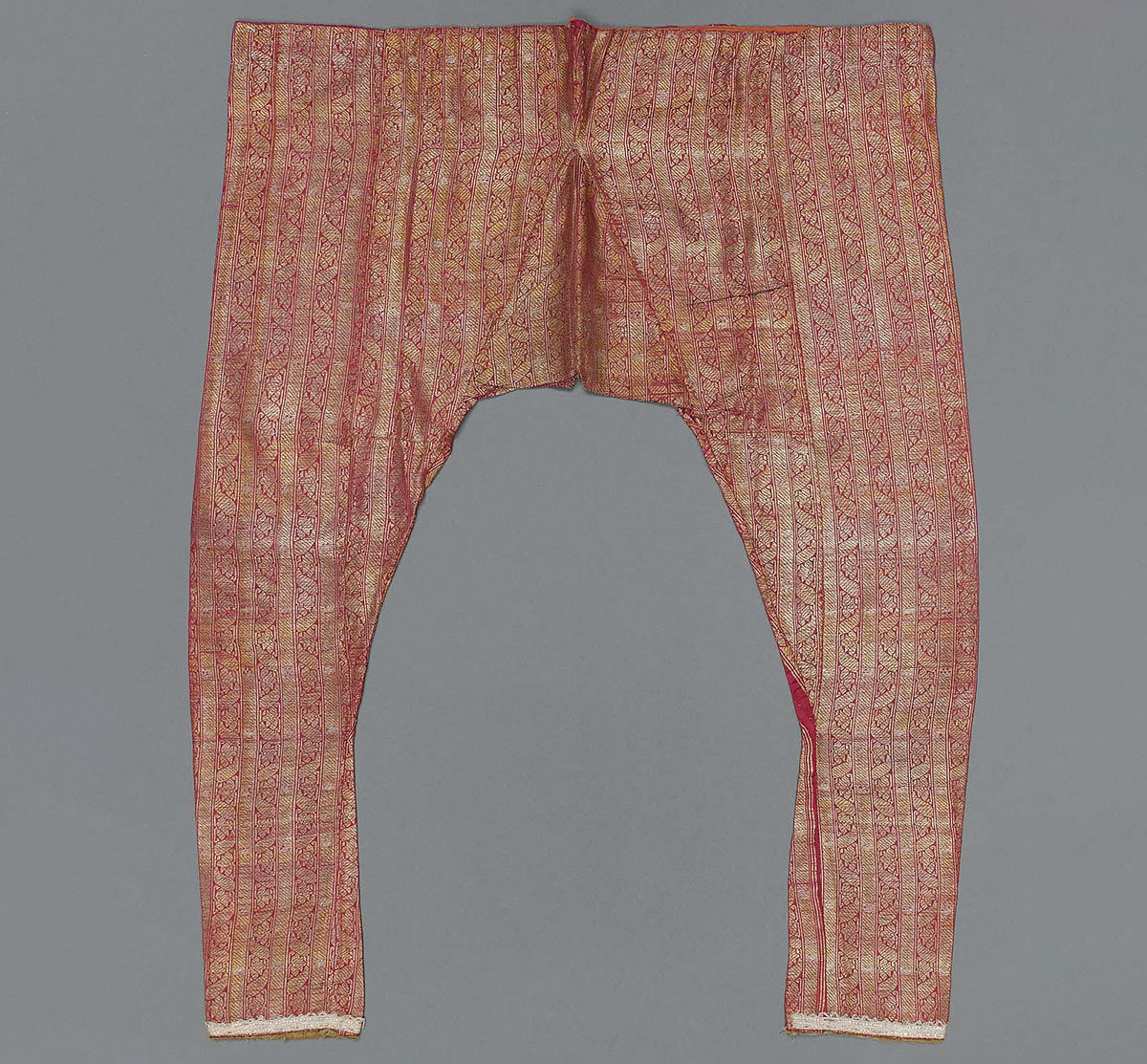A popular lower garment worn by both men and women across India, the pyjama is a kind of loose-fitting trouser held at the waist by a drawstring. The name is a composite of two Persian words: pae, meaning “leg” or “foot,” and jama, meaning “covering.” There are several variants of the pyjama, which differ in length, girth and tightness, including the sharai pyjama, the Punjabi ghuttana and the farshi pyjama.
The garment is widely believed to be a Persian import to India, however there is evidence of its existence dating back to the Gupta period (319–467 CE). Notably, there are four garments similar to the pyjama which make an appearance on artifacts from this time: the sutalā, which covered both the ankle and feet; the pinga, which reached right up to the ankle; the svasthana, covering the knee and half the calf; and, lastly, the chāndtika, which reached till the knee. The Harshacharita, a biography of the Indian emperor Harsha (606–47 CE), also mentions the first three garments, though detailed descriptions of each are not mentioned. Another similar garment from ancient India was the chalana, a type of loose-fitting trouser popular in the Kushan period (30–375 CE).
The pyjama became ubiquitous in the Mughal era and was worn paired with upper garments such as the peshwaz, kurta, jama, chapkan or angrakha. Since it complemented the pirahan – a popular upper garment from this period – so well, the pyjama also received the title of yar pirahan, or “companion of the pairhan,” during the rule of the emperor Akbar. In the late eighteenth, the wide-legged pyjama gained favour over the more fitted variant that appears in several Mughal and Pahari paintings. During this time, the pyjama was also adopted by Rajput foot soldiers as a utilitarian alternative to the dhoti, since it afforded the wearer far greater mobility.
By the nineteenth century, wide-legged pyjamas made of cotton or silk that almost trailed the ground became common in the courts of Delhi and Lucknow, and were known as the sidha pyjama or arz ke painchon ka pyjama. Another widely-recorded garment similar to the pyjama is the chudidaar. Within the Islamic tradition, the pyjama is also known as izar, due to which the drawstring used to hold the pyjama at the waist is also called the izarband.








